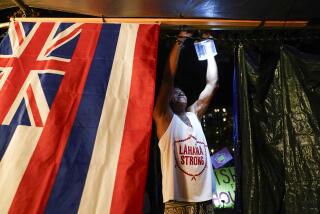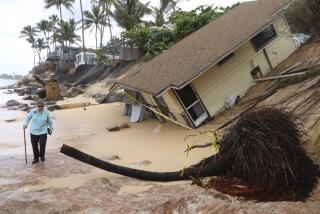Hawaii to require solar water heaters for new homes
- Share via
With a heavy reliance on imported fossil fuels, Hawaii has become the first state to require solar water heaters in new homes, pleasing environmentalists but leading opponents to note the island chain’s already high home prices.
Republican Gov. Linda Lingle signed a bill this week that requires the energy-saving systems starting in 2010. She said the law was “another important step in our long-term plan for energy independence in Hawaii.”
Hawaiian Electric Co. estimates that about 85,000 households, or roughly 20% of all homes on the islands, already have solar water heating systems. They come standard in many new homes.
A traditionally powered water heater is the largest consumer of electricity inside a home, accounting for about 25% to 40% of the power used. A solar system costs about $6,000, compared with about $700 for an electric or natural gas water heater.
Environmentalists applauded the requirement.
“At a time when the globe hungers for smart energy solutions, Hawaii is demonstrating how it can be done,” said Jeff Mikulina, director of the Sierra Club of Hawaii.
But opponents contend that the law is unfair and will drive up home prices in Hawaii, where a modest home can start at $600,000.
State Sen. Gary Hooser, a Democrat who first introduced the measure five years ago, said home buyers would save money in the long run, with electricity bills at least $50 lower each month in a state with the highest electricity rates in the nation.
“I’m hoping this will start a trend nationwide,” said Hooser, who plans to meet with lawmakers in other sunny states such as California to push similar laws.
Hawaii relies on imported fossil fuels more than any other state, with about 90% of its energy coming from foreign countries, according to state data.
The new law prohibits issuing building permits for single-family homes that do not have solar water heaters. Some exceptions will be allowed, such as forested areas with little sunshine.
In January, Lingle announced the Hawaii Clean Energy Initiative partnership, which aims to have at least 70% of Hawaii’s energy needs supplied by renewable sources by 2030.
More to Read
Sign up for Essential California
The most important California stories and recommendations in your inbox every morning.
You may occasionally receive promotional content from the Los Angeles Times.










